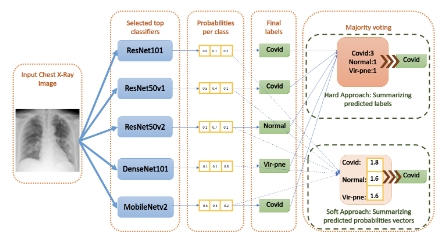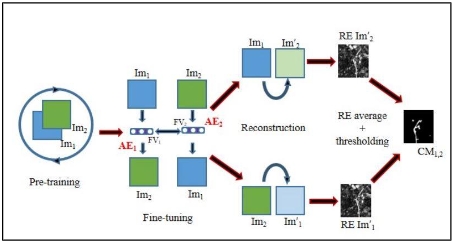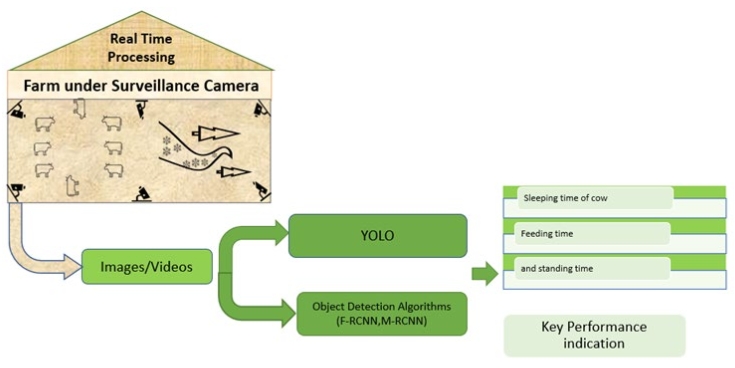Is it possible to detect cribriform adverse pathology in prostate cancer with magnetic resonance imaging machine learning-based radiomics?
Abstract
Rationale and objectives: Cribriform patterns are accepted as aggressive variants of prostate cancer. These adverse pathologies are closely associated with early biochemical recurrence, metastasis, castration resistance, and poor disease-related survival. A few publications exist to diagnose these two adverse pathologies with multiparametric magnetic resonance imaging (mpMRI). Most of these publications are retrospective and are not studies that have made a difference in diagnosing adverse pathology. It is also known that fusion biopsies taken from lesions detected in mpMRI are insufficient to detect these adverse pathologies. Our study aims to diagnose this adverse pathology using machine learning-based radiomics data from MR images. Materials and methods: A total of 88 patients who had pathology results indicating the presence of cribriform pattern and prostate adenocarcinoma underwent preoperative MRI examinations and radical prostatectomy. Manual slice-by-slice 3D volumetric segmentation was performed on all axial images. Data processing and machine learning analysis were conducted using Python 3.9.12 (Jupyter Notebook, Pycaret Library). Results: Two radiologists, SE and MAG, with 7 and 8 years of post-graduate experience, respectively, evaluated the images using the 3D-Slicer software without knowledge of the histopathological findings. One hundred seventeen radiomic tissue features were extracted from T1 weighted (T1W) and apparent diffusion coefficient (ADC) sequences for each patient. The interobserver agreement for these features was analyzed using the intraclass correlation coefficient (ICC). Features with excellent interobserver agreement (ICC > 0.90) were further analyzed for collinearity between predictors using Pearson’s correlation. Variables showing a very high correlation (r ≥ ±0.80) were disregarded. The selected features for T1W and ADC images were First-order maximum, First-order skewness, First-order 10th percentile for ADC, and Gray level size zone matrix, Large area low gray level emphasis for T1W.As a result of the classification of PyCaret, the three best models were found. A single model was obtained by blending these three models. AUC, accuracy, recall, precision, and F1 scores were 0.79, 0.77, 0.85, 0.82, and 0.83, respectively. Conclusion: ML-based MRI radiomics of prostate cancer can predict the cribriform pattern. This prognostic factor cannot be determined through qualitative radiological evaluation and may be overlooked in preoperative histopathological specimens.
References
[1]Hesterberg AB, Gordetsky JB, Hurley PJ. Cribriform Prostate Cancer: Clinical Pathologic and Molecular Considerations. Urology. 2021; 155: 47-54. doi: 10.1016/j.urology.2021.05.028
[2]Kweldam CF, van der Kwast T, van Leenders GJ. On cribriform prostate cancer. Translational Andrology and Urology. 2018; 7(1): 145-154. doi: 10.21037/tau.2017.12.33
[3]Cai Q, Shah RB. Cribriform Lesions of the Prostate Gland. Surgical Pathology Clinics. 2022; 15(4): 591-608.
[4]Destouni M, Lazaris AC, Tzelepi V. Cribriform Patterned Lesions in the Prostate Gland with Emphasis on Differential Diagnosis and Clinical Significance. Cancers. 2022; 14(13): 3041. doi: 10.3390/cancers14133041
[5]Montironi R, Cimadamore A, Gasparrini S, et al. Prostate cancer with cribriform morphology: diagnosis, aggressiveness, molecular pathology and possible relationships with intraductal carcinoma. Expert Review of Anticancer Therapy. 2018; 18(7): 685-693. doi: 10.1080/14737140.2018.1469406
[6]Tuna MB, Arslan A, Kök YB, et al. Cribriform Pattern of The Prostate Adenocarcinoma: Sensitivity of Multiparametric MRI. Urol J. 2022; 20(1): 34-40.
[7]Kazan O, Gunduz N, Kir G, et al. The cribriform morphology impairs Gleason 7 prostate cancer lesion detection on multiparametric magnetic resonance imaging. The Prostate. 2022; 83(4): 331-339.
[8]Gaudiano C, Bianchi L, De Cinque A, et al. The impact of multiparametric MRI features to identify the presence of prevalent cribriform pattern in the peripheral zone tumors. La radiologia medica. 2021; 127(2): 174-182.
[9]Cho HH, Kim CK, Park H. Overview of radiomics in prostate imaging and future directions. The British Journal of Radiology. 2021; 95(1131).
[10]Hectors SJ, Cherny M, Yadav KK, et al. Radiomics Features Measured with Multiparametric Magnetic Resonance Imaging Predict Prostate Cancer Aggressiveness. The Journal of Urology. 2019; 202(3): 498-505.
[11]Smith CP, Czarniecki M, Mehralivand S, et al. Radiomics and radiogenomics of prostate cancer. Abdominal Radiology. 2018; 44(6): 2021-2029. doi: 10.1007/s00261-018-1660-7
[12]Sun Y, Reynolds HM, Parameswaran B, et al. Multiparametric MRI and radiomics in prostate cancer: a review. Australasian Physical & Engineering Sciences in Medicine. 2019; 42(1): 3-25. doi: 10.1007/s13246-019-00730-z
[13]Midiri F, Vernuccio F, Purpura P, et al. Multiparametric MRI and Radiomics in Prostate Cancer: A Review of the Current Literature. Diagnostics. 2021; 11(10): 1829. doi: 10.3390/diagnostics11101829
[14]Bi WL, Hosny A, Schabath MB, et al.Artificial intelligence in cancer imaging: Clinical challenges and applications. CA: A Cancer Journal for Clinicians. 2019; 69(2): 127-157.
[15]Liberini V, Laudicella R, Balma M, et al. Radiomics and artificial intelligence in prostate cancer: new tools for molecular hybrid imaging and theragnostics. European Radiology Experimental. 2022; 6(1). doi: 10.1186/s41747-022-00282-0
[16]Azadi Moghadam P, Bashashati A, Goldenberg SL. Artificial Intelligence and Pathomics. Urologic Clinics of North America. 2024; 51(1): 15-26. doi: 10.1016/j.ucl.2023.06.001
[17]Chaddad A, Tan G, Liang X, et al. Advancements in MRI-Based Radiomics and Artificial Intelligence for Prostate Cancer: A Comprehensive Review and Future Prospects. Cancers. 2023; 15(15): 3839. doi: 10.3390/cancers15153839
[18]Collewet G, Strzelecki M, Mariette F. Influence of MRI acquisition protocols and image intensity normalization methods on texture classification. Magnetic Resonance Imaging. 2004; 22(1): 81-91. doi: 10.1016/j.mri.2003.09.001
[19]Patro S, Sahu KK. Normalization: a preprocessing stage. arXiv. 2015.
[20]Amini N, Mahdavi M, Choubdar H, et al. Automated prediction of COVID-19 mortality outcome using clinical and laboratory data based on hierarchical feature selection and random forest classifier. Computer Methods in Biomechanics and Biomedical Engineering. 2022; 26(2): 160-173.
[21]Available online: https://www.slicer.org/ (accessed on 13 January 2024).
[22]Duda RO, Hart PE, Stork DG. Pattern classification. New York: John Willey and Sons; 2001.
[23]Varma S, Simon R. Bias in error estimation when using cross-validation for model selection. BMC Bioinformatics. 2006 Feb 23;7:91.
[24]Available online: https://pycaret.org/ (accessed on 13 January 2024).
[25]Narasimhulu, C Venkata. An automatic feature selection and classification framework for analyzing ultrasound kidney images using dragonfly algorithm and random forest classifier. IET Image Processing. 2021;15. 10.1049/ipr2.12179.
[26]Rubin MA, de La Taille A, Bagiella E, et al. Cribriform Carcinoma of the Prostate and Cribriform Prostatic Intraepithelial Neoplasia. The American Journal of Surgical Pathology. 1998; 22(7): 840-848.
[27]Miyai K, Divatia MK, Shen SS, et al. Clinicopathological analysis of intraductal proliferative lesions of prostate: intraductal carcinoma of prostate, high-grade prostatic intraepithelial neoplasia, and atypical cribriform lesion. Human Pathology. 2014; 45(8): 1572-1581.
[28]Shah RB, Zhou M. Atypical Cribriform Lesions of the Prostate. Advances in Anatomic Pathology. 2012; 19(4): 270-278.
[29]Russo GI, Soeterik T, Puche-Sanz I, et al. Oncological outcomes of cribriform histology pattern in prostate cancer patients: a systematic review and meta-analysis. Prostate Cancer and Prostatic Diseases. 2022; 26(4): 646-654.
[30]The Impact of Histological Variants on the Performance Characteristics of 68Ga-PSMA PET/CT. Available online: https://www.urotoday.com/conference-highlights/2022-annual-meeting/aua-2022-prostate cancer/137349-aua-2022-the-impact-of-histological-variants-on-the-performance characteristics-of-68ga-psma-pet-ct-in-the-primary-and-recurrent-setting.html (accessed on 1 January 2024).
[31]Truong M, Feng C, Hollenberg G, et al. A Comprehensive Analysis of Cribriform Morphology on Magnetic Resonance Imaging/Ultrasound Fusion Biopsy Correlated with Radical Prostatectomy Specimens. Journal of Urology. 2018; 199(1): 106-113.
Copyright (c) 2024 Hüseyin Bıçakçıoğlu, Sedat Soyupek, Onur Ertunç, Şehnaz Evirmler, Tekin Ahmet Serel

This work is licensed under a Creative Commons Attribution 4.0 International License.










